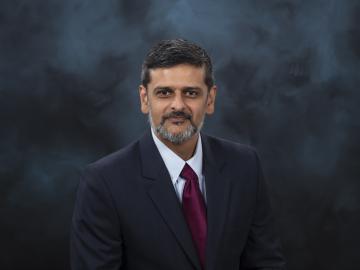
Filter News
Area of Research
- Advanced Manufacturing (3)
- Biology and Environment (9)
- Clean Energy (30)
- Computational Engineering (1)
- Computer Science (5)
- Electricity and Smart Grid (1)
- Fuel Cycle Science and Technology (1)
- Functional Materials for Energy (1)
- Fusion and Fission (12)
- Fusion Energy (1)
- Isotope Development and Production (1)
- Isotopes (3)
- Materials (19)
- Materials for Computing (2)
- National Security (16)
- Neutron Science (13)
- Nuclear Science and Technology (11)
- Quantum information Science (2)
- Sensors and Controls (1)
- Supercomputing (47)
News Type
News Topics
- (-) Advanced Reactors (13)
- (-) Artificial Intelligence (37)
- (-) Biomedical (18)
- (-) Clean Water (2)
- (-) Computer Science (66)
- (-) Grid (19)
- (-) Nuclear Energy (35)
- (-) Security (12)
- (-) Software (1)
- 3-D Printing/Advanced Manufacturing (52)
- Big Data (12)
- Bioenergy (24)
- Biology (23)
- Biotechnology (8)
- Buildings (21)
- Chemical Sciences (38)
- Climate Change (26)
- Composites (12)
- Coronavirus (17)
- Critical Materials (11)
- Cybersecurity (18)
- Decarbonization (24)
- Education (3)
- Element Discovery (1)
- Energy Storage (47)
- Environment (45)
- Exascale Computing (13)
- Fossil Energy (1)
- Frontier (17)
- Fusion (18)
- High-Performance Computing (35)
- Irradiation (1)
- Isotopes (22)
- ITER (2)
- Machine Learning (14)
- Materials (69)
- Materials Science (57)
- Mercury (2)
- Microelectronics (1)
- Microscopy (18)
- Molten Salt (3)
- Nanotechnology (28)
- National Security (22)
- Net Zero (4)
- Neutron Science (58)
- Partnerships (30)
- Physics (24)
- Polymers (13)
- Quantum Computing (11)
- Quantum Science (29)
- Renewable Energy (1)
- Simulation (12)
- Space Exploration (3)
- Statistics (1)
- Summit (22)
- Sustainable Energy (37)
- Transformational Challenge Reactor (4)
- Transportation (33)
Media Contacts
The contract will be awarded to develop the newest high-performance computing system at the Oak Ridge Leadership Computing Facility.

To better predict long-term flooding risk, scientists at the Department of Energy’s Oak Ridge National Laboratory developed a 3D modeling framework that captures the complex dynamics of water as it flows across the landscape. The framework seeks to provide valuable insights into which communities are most vulnerable as the climate changes, and was developed for a project that’s assessing climate risk and mitigation pathways for an urban area along the Southeast Texas coast.

ORNL researchers completed successful testing of a gallium nitride transistor for use in more accurate sensors operating near the core of a nuclear reactor. This is an important technical advance particularly for monitoring new, compact.

Anuj J. Kapadia, who leads the Advanced Computing in Health Sciences Section at the Department of Energy’s Oak Ridge National Laboratory, was named a 2024 Fellow by the American Association of Physicists in Medicine.

Phani Ratna Vanamali Marthi, an R&D associate in the Power Systems Resilience group at ORNL, has been elevated to the grade of senior member of the Institute of Electrical and Electronics Engineers, the world’s largest technical professional

Vanderbilt University and ORNL announced a partnership to develop training, testing and evaluation methods that will accelerate the Department of Defense’s adoption of AI-based systems in operational environments.

Researchers at ORNL are developing battery technologies to fight climate change in two ways, by expanding the use of renewable energy and capturing airborne carbon dioxide.

Scientists at ORNL completed a study of how well vegetation survived extreme heat events in both urban and rural communities across the country in recent years. The analysis informs pathways for climate mitigation, including ways to reduce the effect of urban heat islands.

ORNL has named W. David Pointer, director of the Nuclear Energy and Fuel Cycle Division in ORNL’s Fusion and Fission Energy and Science Directorate. As director, Pointer will lead a world-class team of ORNL research professionals focused on addressing the challenges and opportunities presented by current and future nuclear energy systems.

Forrest Hoffman, a distinguished scientist at the Department of Energy’s Oak Ridge National Laboratory, has been named a senior member of the Institute of Electrical and Electronics Engineers, the world’s largest organization for technical professionals.


